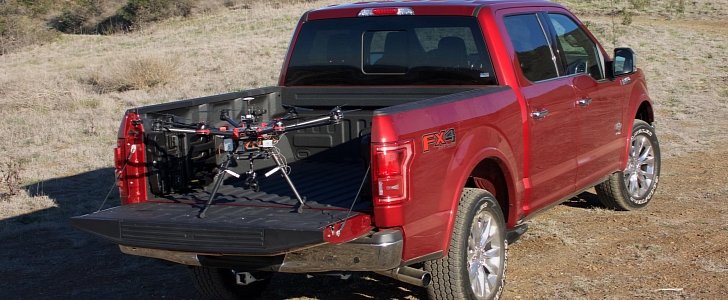Ford is seeking to develop a new mobility innovation, part of its Ford Smart Mobility program, and together with DJI, well known for its drone systems and software, is planning to create a rapidly surveying system for the United Nations to use in emergency zones.
In this regard, the Detroit-based company invites people to participate in the DJI Developer Challenge to create drone-to-vehicle communications using FordSYNC AppLink or OpenXC. The winner of this challenge will receive $100,000.
Although future applications might include other domains such as agriculture, forestry, construction or bridge inspection, for the moment, the primary goal of this project is for the United Nations Development Program to inspect emergency zones that not even the most versatile vehicle could reach.
This technology will allow the UN to quickly respond to natural calamities, such as earthquakes or tsunamis, and deploy drones able to survey and map hardest-hit areas. Oh, I forgot to mention: all from the cab of a Ford F-150.
Ken Washington, Ford’s Research and Advanced Engineering vice president, said that “Working with DJI and the United Nations, there is an opportunity to make a big difference with vehicles and drones working together for a common good.”
The base principle of this project is very simple: in case of a disaster, a Ford F-150 would drive as far as possible into an emergency zone. Using the car’s touch screen, the driver could identify the area and launch a drone that would then follow a flight path over the affected region, capturing video and creating a map of survivors with associated close-up pictures of each.
The car would establish a real-time connection between the drone, the truck and the cloud, and then it would store the data, all with the help of the driver’s smartphone. The data would be relayed to the drone so the driver can continue to a new destination while the drone would catch up and safely land on the truck’s pad.
Although it’s quite hard to achieve something like this, let’s not forget that we live in the era of technology, and if this system gets up and running, a lot of lives would be saved.
Although future applications might include other domains such as agriculture, forestry, construction or bridge inspection, for the moment, the primary goal of this project is for the United Nations Development Program to inspect emergency zones that not even the most versatile vehicle could reach.
This technology will allow the UN to quickly respond to natural calamities, such as earthquakes or tsunamis, and deploy drones able to survey and map hardest-hit areas. Oh, I forgot to mention: all from the cab of a Ford F-150.
Ken Washington, Ford’s Research and Advanced Engineering vice president, said that “Working with DJI and the United Nations, there is an opportunity to make a big difference with vehicles and drones working together for a common good.”
The base principle of this project is very simple: in case of a disaster, a Ford F-150 would drive as far as possible into an emergency zone. Using the car’s touch screen, the driver could identify the area and launch a drone that would then follow a flight path over the affected region, capturing video and creating a map of survivors with associated close-up pictures of each.
The car would establish a real-time connection between the drone, the truck and the cloud, and then it would store the data, all with the help of the driver’s smartphone. The data would be relayed to the drone so the driver can continue to a new destination while the drone would catch up and safely land on the truck’s pad.
Although it’s quite hard to achieve something like this, let’s not forget that we live in the era of technology, and if this system gets up and running, a lot of lives would be saved.

